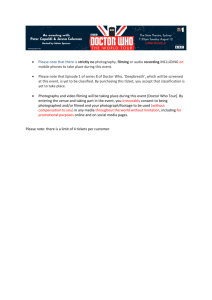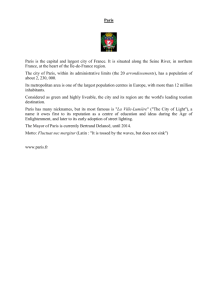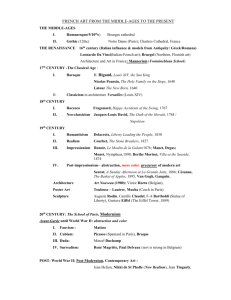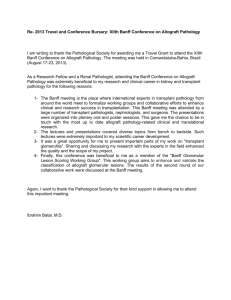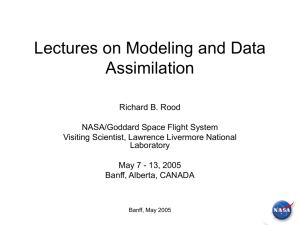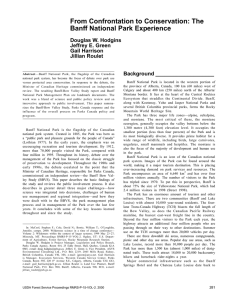Document
advertisement
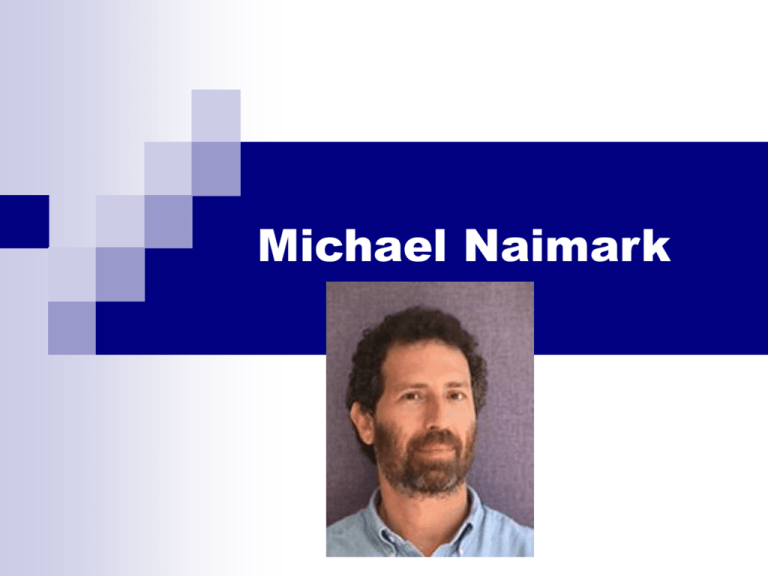
Michael Naimark Biography: Born in 1952 - Detroit (51 years old) He is known as a “pioneer of the first generation” of immersive environments, along with Myron Krueger and Jeffrey Shaw He created a B.S. in “Cybernetic Systems” as an independent major from the University of Michigan in 1974 Received an M.S. in Visual Studies and Environmental Art from MIT in 1979 Teaching History: He has held faculty positions at San Francisco Art Institute San Francisco State University California Institute of the Arts MIT University of Michigan Career History: an independent media artist from 1980 to 1992, he produced artworks in conjunction with the Paris Metro the Exploratorium the ZKM (German center for art and media) the Banff Centre and consulted for companies including Atari Lucasfilm Apple Panavision Interval Research From 1992-2001, he worked at Interval Research, the billion-dollar think-tank founded (and funded with $100 million) by Microsoft co-founder, Paul Allen. At Interval, he didn't have to spend time writing grant proposals and scraping for dwindling NEA funds. He worked with 60 other brilliant people -- from engineers and programmers to clothing designers and artists. Philosophy Naimark defines immersion as “the feeling of being inside rather than outside” He focuses on public space immersion, where several people are in a virtual space at the same time. He regards immersion that uses computer graphics critically. He sees his panoramic landscapes as related to landscape painting, ethnographic field work, and cinema verite. Aspen MovieMap His laser disc tour of Aspen, Colo., ("Aspen Moviemap," 1978-80), was one of the first examples of interactive multimedia. Aspen was filmed at short intervals from a car that was driven along all possible fixed routes. QuickTime™ and a Sorens on Video dec ompres sor are needed to see this pic ture. Talking Head Projection (1979) used a moving faceshaped screen, mounted in a pan-tilt gimbal, whose movement was driven by the actual head movement of our subject. This movement was encoded and recorded during filming, along with image and sound, on super8 film. Eyepiece (1979) a 16mm film installation, where an image of a human eye is projected onto a custom-made rearscreen dome, thus become 3-D Displacements (1984) An archetypal Americana living room was installed in an exhibition space. Then two performers were filmed in the space using a 16mm motion picture camera on a slowly rotating turntable in the room’s center Displacements (1984) After filming, the camera was replaced with a film loop projector and the entire contents of the room were spray-painted white. The reason was to make a projection screen the right shape for projecting everything back onto itself Displacements (1984) The result was that everything appears strikingly 3D, except for the people, who of course weren’t spray-paint white, and consequently appeared very ghostlike and unreal QuickTime™ and a Sorens on Video dec ompres sor are needed to see this pic ture. Paris VideoPlan (1986) was commissioned by the RATP (Paris Metro) to map the Madeleine district of Paris from the point-of-view of walking down the sidewalk. It was filmed with a stopframe 35mm camera mounted on an electric cart, filming one frame every 2 meters. An encoder was attached to one of the cart's axles Paris VideoPlan (1986) Rather than filming all the turn possibilities at each intersection, a mime was employed to stand in each intersection and simply point in the possible turn directions Paris VideoPlan (1986) The playback system was built in a kiosk and exhibited in the Madeleine Metro Station Golden Gate Fly-over (1987) a moviemap of the San Francisco Bay Area from the air. We used a special gyro-stabilized helicopter camera and satellite navigation to film along a precise ten by ten mile grid centered on Golden Gate Bridge Golden Gate Fly-over (1987) This exhibit uses a single trackball as the input device, so it is very easy to use. It allows moving around the Bay Area at unnaturally fast speeds Golden Gate Fly-over (1987) QuickTime™ and a Sorens on Video dec ompres sor are needed to see this pic ture. The goal was not to re-create a helicopter ride as much as to create a hyper-real experience, something impossible to experience in the physical world SEE BANFF! (1993-94) an interactive stereoscopic installation. It bears a strong - and intentional resemblance to an Edison kinetoscope, which made its public debut one hundred years ago in April 1894 SEE BANFF! (1993-94) These views were filmed around Banff and rural Alberta in autumn 1993. They were recorded with two stop-frame 16mm film cameras mounted on a "super jogger" baby carriage. Stereoscopic recording was either triggered by an intervalometer or by an encoder on one of the carriage wheels. Since the filming was "stop-frame", time and space appear compressed. SEE BANFF! (1993-94) The imagery is part of an investigation of the role of media and its relationship to landscape, tourism, and growth. Recordings were made dollying along waterfalls, glaciers, mountains, and farmland; moviemapping up and down popular natural trails; and timelapsing tourists. Be Now Here (1993-95) an installation about landscape and public places. Visitors gain a strong sense of place by wearing 3D glasses and stepping into an immersive virtual environment Be Now Here (1993-95) The imagery is of public plazas on the UNESCO World Heritage Centre's list of endangered places - Jerusalem, Dubrovnik, Timbuktu, and Angkor, Cambodia – places both exotic and disturbing. Be Now Here (1993-95) For production, a unique recording system was built consisting of two 35mm motionpicture cameras (for 3D, one for each eye) mounted on a rotating tripod Be Now Here (1993-95) The installation consists of an input pedestal for interactively choosing place and time, a stereoscopic projection screen, four-channel audio, and a 16-foot rotating floor on which the viewers stand. The End
